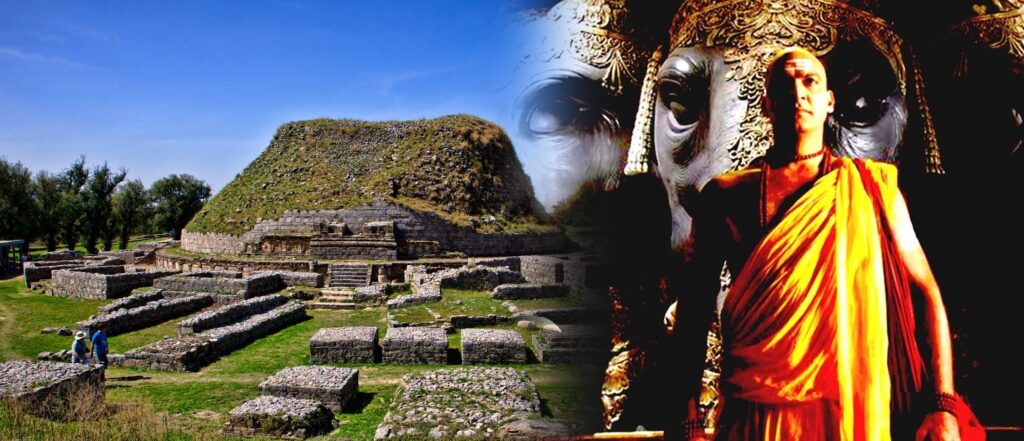In the known history of 5000 years, India remained the wealthiest and most advanced nation for 4800 years, and the spine of this feat was the knowledge of the people. Ancient India had a systematic learning system. But unfortunately, with the destruction of universities by the invading Muslims and Huns, the eco-system was disrupted. Whatever was remaining was garbled and destroyed by Britishers in the nineteenth and twentieth century. The literacy rate of such an educated country at the time of India’s freedom from British rule came down to barely 12%
Knowledge sharing was not a business or a paid profession. There were gurukuls and Ashramas for every village. These centers of learning were situated outside the towns, and the teachers here were called Gurus. The commercialization of education and learning was not in practice. Every student used to pay a Guru-Dakshina as a token of gratitude. Students held Gurus in high esteem and were considered more sacred than parents also. There used to a sacred personal bond between Guru & Shishya.
Mahabharata gives examples of famous ashramas as centers of learning like Naimisha and Ashramas of Vyasa, Vashishtha, Viswamitra. Among Vyasa’s disciples were Sumantra, Vaisampayana, Jamini, Paila, and Suka. One hermitage near Kukshetra with two female Rishis also existed. Rishi Kanva presided numerous hermitages. There were specialists in every branch of knowledge, in each of four Vedas, in Yagya related literature, and art, Kalpa Sutra, In chhanda, shabda, and vyakarana nirukta. There were Logicians for law, specialists in physical sciences and arts who taught their skills. Mathematics, Geometry, Zoology was taught by experts.
Over time, the system of transmission of knowledge got institutionalized, and rulers established universities. The campus of temples served as schools. Takshila is the first brick and mortar University which existed about 2700 year ago. In that period, no human-made religion was born. Buddhism, Jainism, Judaism, Christianity, and Islam came into existence much later. More than 10,500 students studied at Takshshila University. Students from Babylonia, Greece, Arabia, Korea, Japan, Indonesia, China, and West Asia studied here. Subjects like Vedas, Sanskrit, Philosophy, Ayurveda, Surgery, Agriculture, Politics, Archery, Warfare, Astronomy, commerce, Futurology, Music, and Dance. Takshila made significant contributions to the civilizations in the world. Author of Artha Shastra, Acharya Chanakya, famous Ayurveda Shastri Charaka, Jivaka, another famous physician and surgeon, and Panini were alumni of his great University. Buddhist Jatakas, written around the 5th century AD, has described Takshila as a great learning center.
Nalanda University is the second most significant university that was much more prominent in size and better organized. Historical sources indicate that the University had a long and illustrious life that lasted almost continually for 800 years from the fifth to the twelfth century CE. It was an entirely residential university believed to have 2,000 teachers and 10,000 students. Through their architectural components, the Nalanda ruins revealed the holistic nature of knowledge sought and imparted at this University. It suggests a seamless co-existence between nature and man and between living and learning. It was established in about 400 BC by Kumar Gupt. The University was destroyed by Bakhtiyar Khilji, a Turkish who was ruling India at that time.
There were numerous Universities situated in the entire length and breadth of the country. We are unable to trace all of them, some of which have been traced are Vallabhi in Gujrat, Vikramshila in Bihar, Pushpgiri, and Ratnagiri in Odisha, Jagaddala in Bangladesh, Odantpuri in Bihar, Sompura in Bangladesh. Varanasi, Sharda Peeth in Kashmir, Mithila in Bihar, Ujjaini in Madhya Pradesh, Kanjipuram in Tamilnadu, Thrissur, and extending up to Anuradhapura in Sri Lanka.

